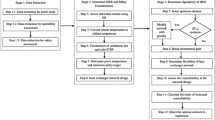Abstract
The design of heat exchanger networks (HEN) is a well-studied problem in process synthesis and an ideal test base to benchmark methods and techniques in the field. Despite a significant number of relevant publications, networks are still designed under assumptions of fixed operating conditions. Significant variations in supply and demand, alongside a need for efficient management in energy markets (energy grids, deregulated markets), impose limitations to this practice. Networks, designed with thermodynamic and economic efficiency under nominal operation, are known to have their efficiency dissipated and wasted in a context of similar though different conditions and demands. In a process plant, operational changes are common but designers still favor the staged approach of Pinch Technology (i.e., targeting-network development) where flexibility is not addressed properly and systematically. Alternatively, superstructure methods offer formulations with complexities hard to address by conventional algorithms.
In this work, flexibility is addressed in a context amenable to targeting and network development stages, offering opportunities to visualise solutions and review options. For targeting, a dual approach is proposed that follows the framework of Hypertargets by Briones and Kokossis (1999a, 1999b, 1999c). The conceptual screening involves (i) the selection of cost-effective (primal) matches, and (ii) a model-based approach to assess the flexibility of the design options. Models and procedures are employed to assess trade-offs between operating cost (energy), capital cost (area), and the options' ability to handle variations (flexibility). Primal matches are automatically developed into network configurations with the use of mathematical models. A rigorous, superstructure-based approach is next applied to ensure the development of networks capable of handling operational variations without a need to consider exhaustive combinations of scenarios. The iterative approach incrementally augments the mathematical formulation by constraints and vertex conditions that guarantee consistency. The procedure is illustrated with two industrial problems and reports important improvements over conventional techniques.
Similar content being viewed by others
References
Briones, V. and A.C. Kokossis. (1999a). "Hypertargets: A Conceptual Programming Approach for the Optimisation of Industrial Heat Exchanger Networks-I. Grassroots Design and Network Complexity." Chem. Engrg. Sci. 54(4), 519–539.
Briones, V. and A.C. Kokossis. (1999b). "Hypertargets: A Conceptual Programming Approach for the Optimisation of Industrial Heat Exchanger Networks-II. Retrofit Design." Chem. Engrg. Sci. 54(4), 541–561.
Briones, V. and A.C. Kokossis. (1999c). "Hypertargets: A Conceptual Programming Approach for the Optimisation of Industrial Heat Exchanger Networks-III. Industrial Applications." Chem. Engrg. Sci. 54(5), 685–706.
Grossmann, I.E. and C.A. Floudas. (1987). "Active Constraint Strategy for Flexibility Analysis in Chemical Processes." Comput. Chem. Engrg. 11(6), 675–693.
Gundersen, T. and L. Naess. (1988). "The Synthesis of Cost Optimal Heat Exchanger Networks. An Industrial Review of the State of the Art." Comput. Chem. Engrg. 12(6), 503–530.
Halemane, K.P. and I.E. Grossmann. (1983). "Optimal Process Design under Uncertainty." AIChE J. 29(3), 425–433.
Nishida, N., G. Stephanopoulos, and A.W. Westerberg. (1981). "A Review of Process Synthesis." AIChE J. 27(3), 321–351.
Swaney, R.E. and I.E. Grossmann. (1985a). "An Index for Operational Flexibility in Chemical Process Design. Part I: Formulation and Theory." AIChE J. 31(4), 621–630.
Swaney, R.E. and I.E. Grossmann. (1985b). "An Index for Operational Flexibility in Chemical Process Design. Part II: Computational Algorithms." AIChE J.31(4), 631–641.
Author information
Authors and Affiliations
Rights and permissions
About this article
Cite this article
Tantimuratha, L., Kokossis, A. Flexible Energy Management and Heat Exchanger Network Design. Ann Oper Res 132, 277–300 (2004). https://doi.org/10.1023/B:ANOR.0000045287.23527.54
Issue Date:
DOI: https://doi.org/10.1023/B:ANOR.0000045287.23527.54




